Irrigation Method #1- Deep Pipe Irrigation
Even though our property borders a creek, the ram pump and piston pump projects are still in the pipeline (ha ha), so we rely solely on rainfall for both household and garden water requirements. Our first fruit trees limped along on the yearly rainfall, but after a few years of their miserably scarce fruity offerings, we knew we needed to irrigate. With such erratic rainfall to refill our tank, the irrigation methods needed to be efficient, and one that is proving hugely successful is deep pipe irrigation.
Recently, I was watering an area without deep pipe irrigation; I gave a good 4 litres or so to a plant, but when I brushed the newly moist soil on the surface, I was shocked to find it bone dry only an inch below. It takes a LOT of water to soak through soil to reach root depth, and this is where deep pipe irrigation comes in.
Simply, you take a length of PVC pipe (to match the depth of the tree hole plus some extra to stick out the surface), drill a line of holes down the pipe, place the pipe vertically in the hole next to the plant, and fill the hole. Voila. Your plant now receives deep pipe irrigation.
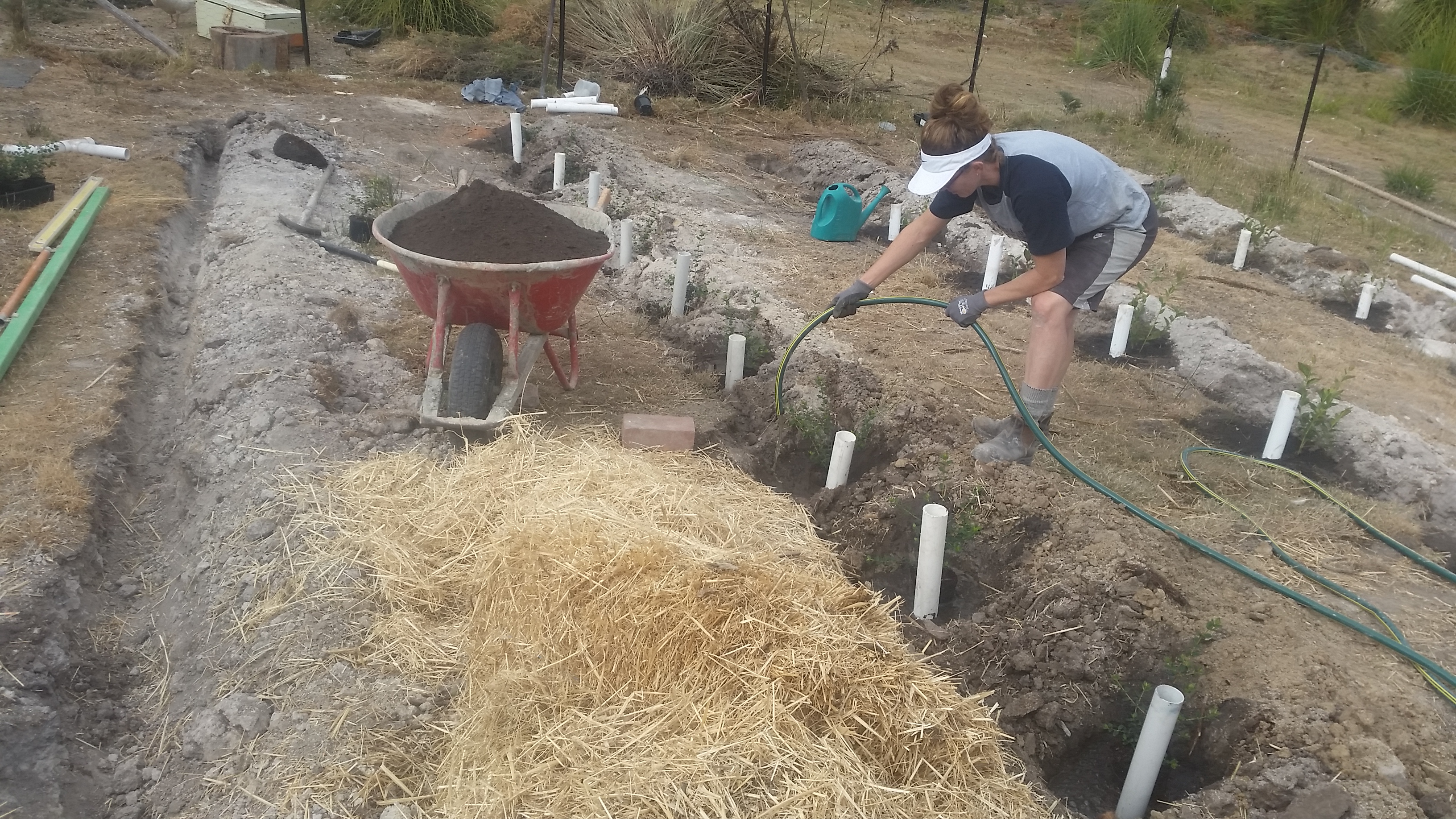
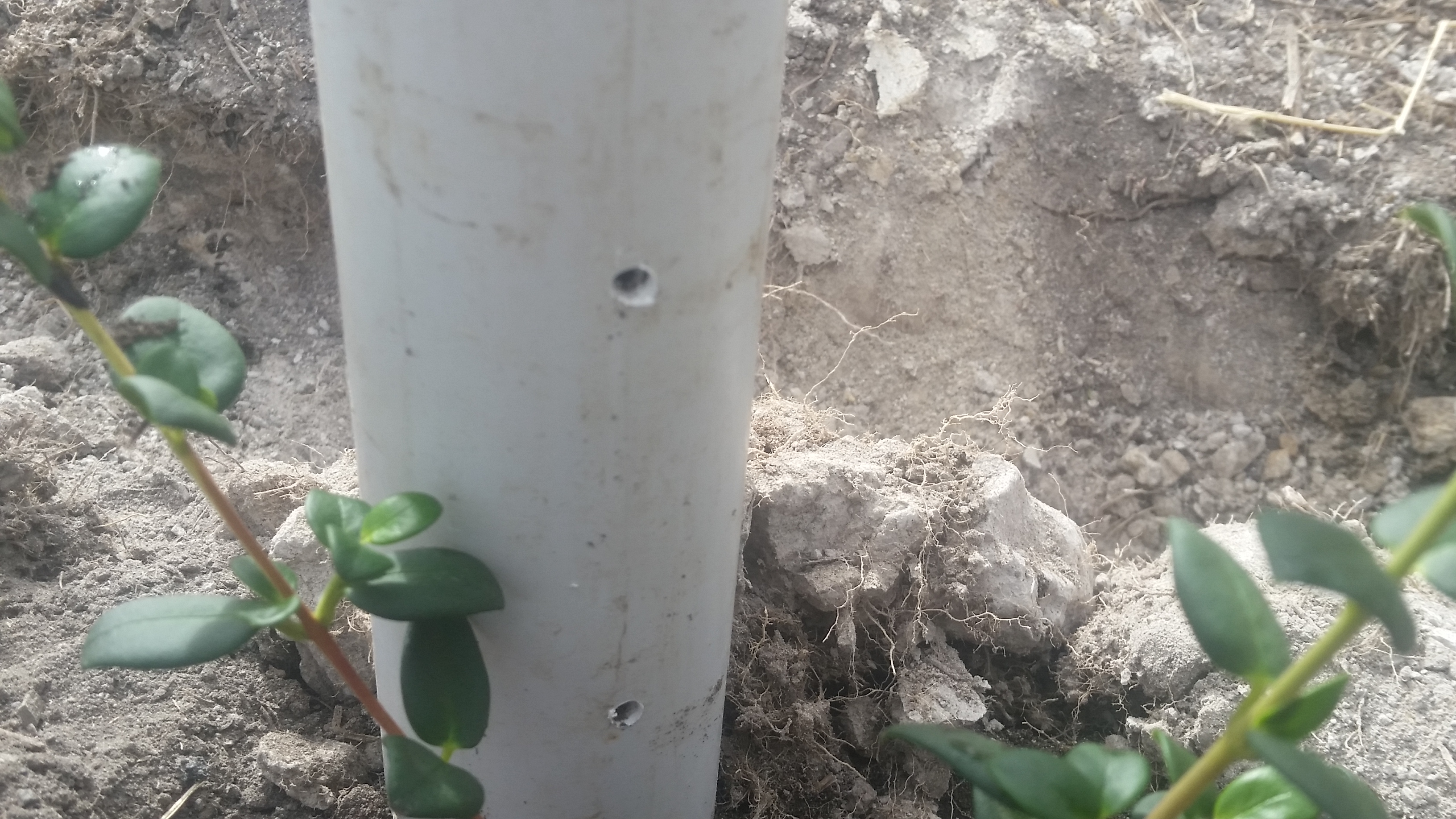
A second slightly different way to use deep pipe irrigation is to dig a trench and lay pipe inside the trench, drilling a hole in the pipe wherever you want to plant. In this case, you’ll want to put an end cap on the pipe so that the water doesn’t just all flow out one end (which is fine in the vertical standpipes). Stick a 90° elbow onto the pipe, slot in a straight standpipe, and there you have it. You have deep pipe irrigation using a horizontal pipe.
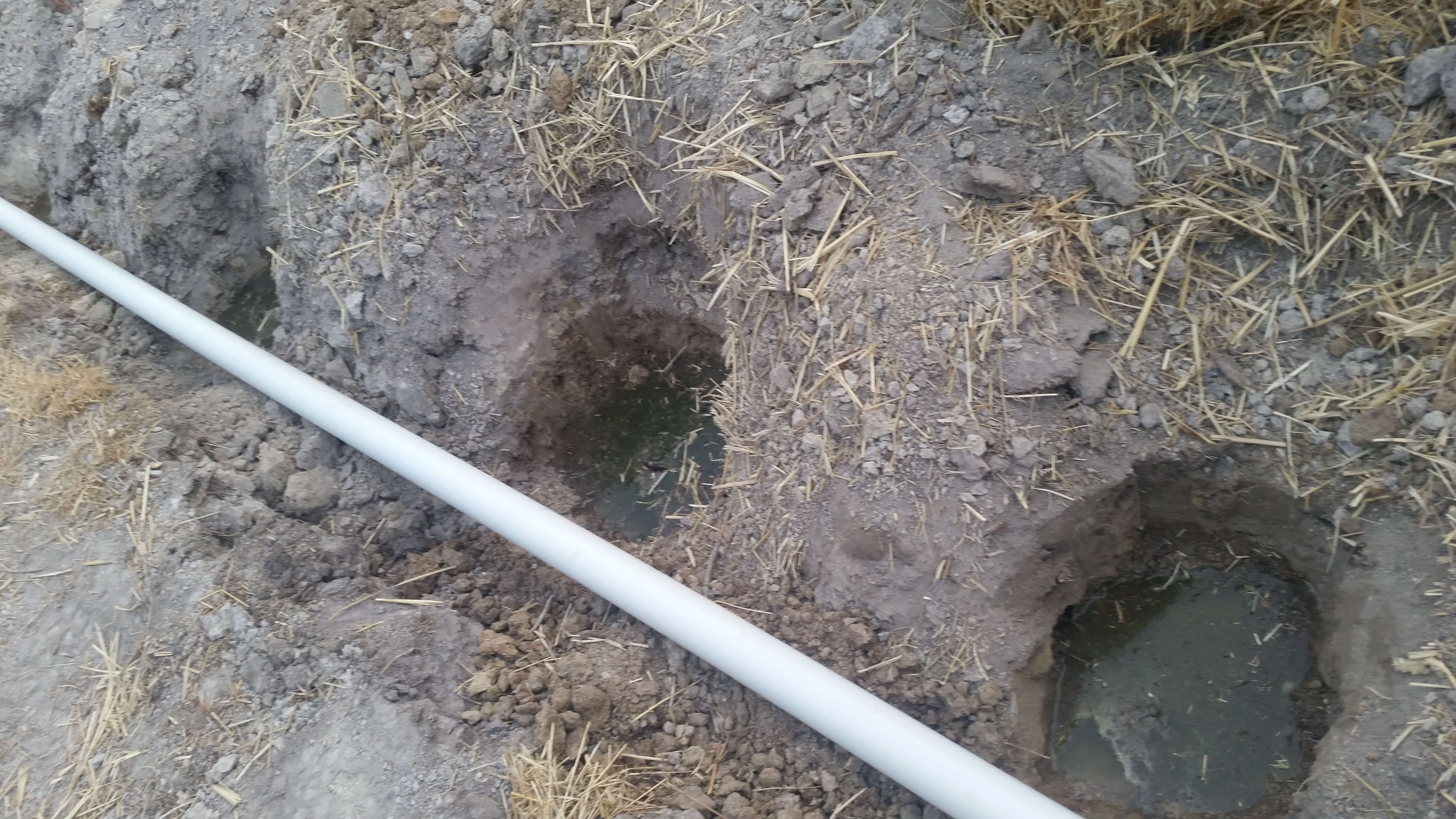

We have just had the driest summer of our time here in Tasmania, and it has been a testament to the effectiveness of deep pipe irrigation. We first planted a ‘fend-for-itself’ patch of raspberries 5 years ago- no irrigation except for a swale to direct and capture rainwater. Then, having more time following the completion of the house, we put in a separate raspberry patch utilising deep pipe irrigation.
Here is a photo of the 5 year old ‘fend-for-themselves’ raspberries.
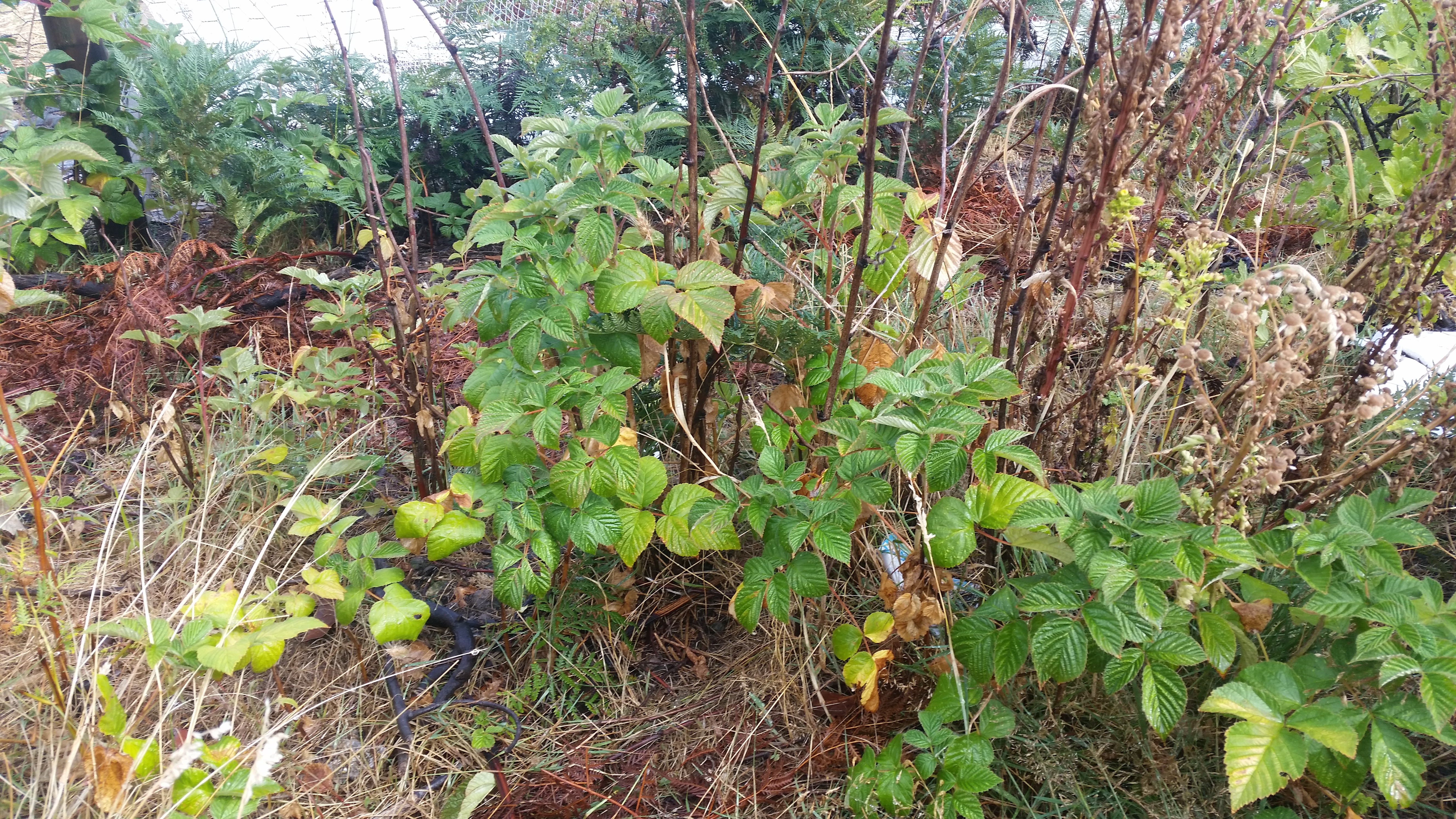
And here is a photo of the 1 year old deep-pipe-irrigated raspberries.
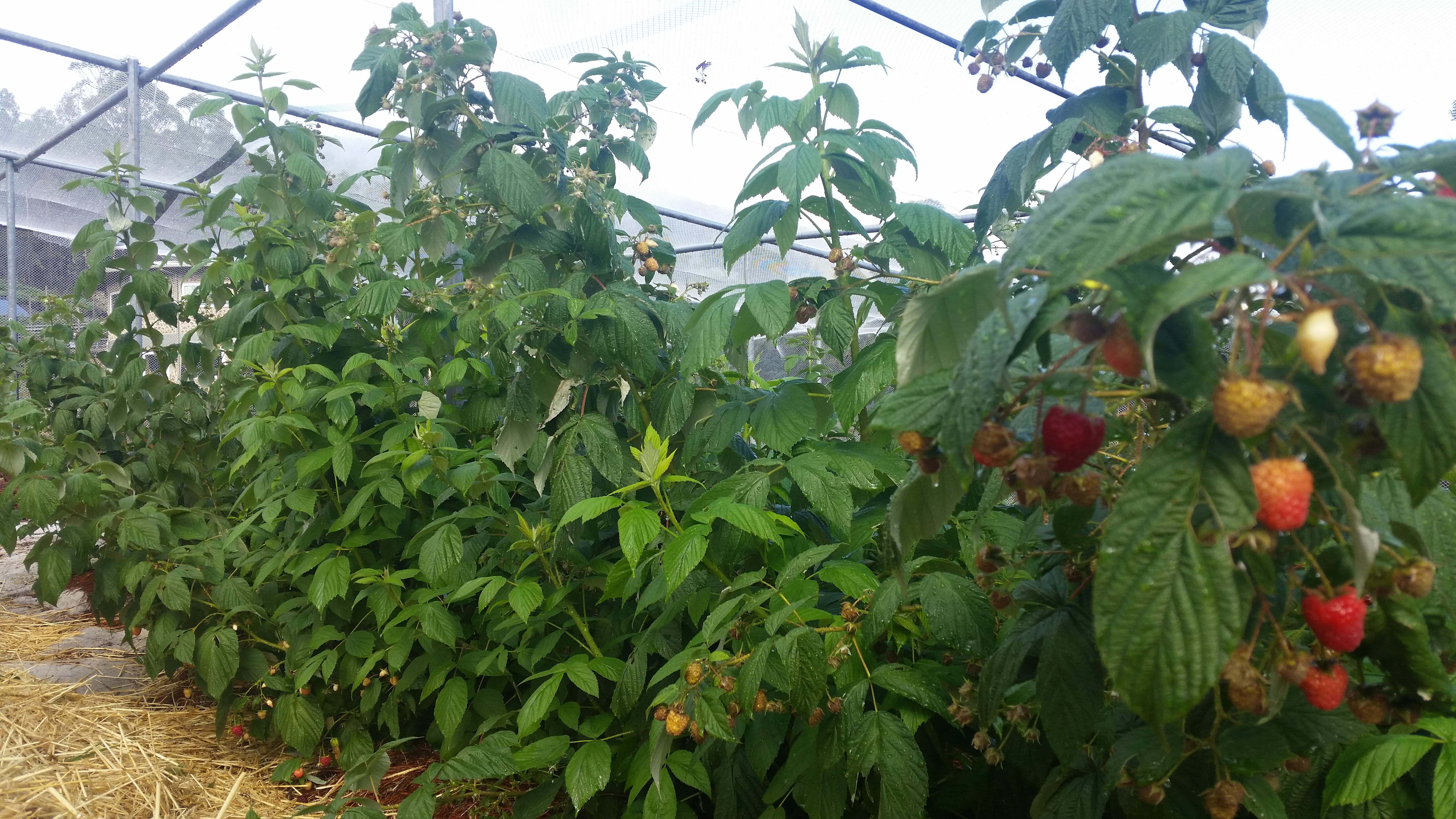
As you can see, absolutely no contest. We have been blown away by the growth of the 1 year old canes, and even in this first year, we have been eating our own luscious raspberries.
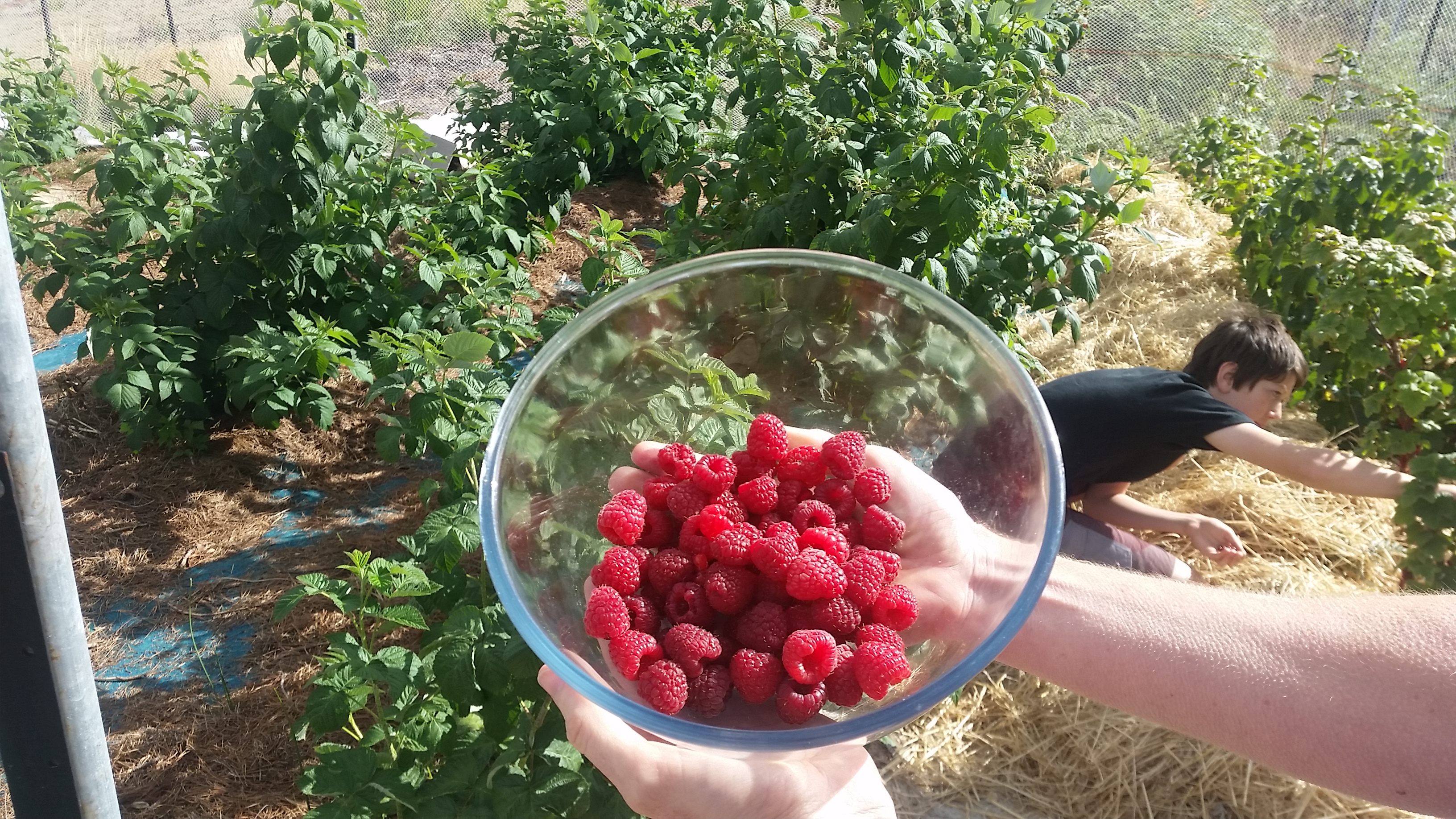
We now have a large-ish area of berries (raspberries, blueberries, currants, and recently Chilean guavas), all utilising a mix of vertical and horizontal deep pipe irrigation, and here is what I have found to be the difference between the two methods:
Advantages- Vertical Pipe
- The vertical standpipes ensure that every plant gets its allotted amount of water. With the horizontal pipes, if a drill hole gets clogged, I would never know until the plant started to die.
- The vertical pipe method ensures that some water is released from the top of the plant all the way to the bottom of the hole (which obviously receives the most). This means that even a young plant with shallow roots will be receiving water in the early stages of its development. With the horizontal pipe, it’s possible that enough water would reach a young plant’s roots by wicking up through the soil, but I don’t know. In the first few weeks, I also watered the surface soil to be certain.
Advantages- Horizontal Pipe
- The horizontal standpipe method feels faster to do when there are a lot of plants to deal with: less cuts of the PVC pipe.
- The horizontal pipe method is MUCH FASTER for watering. I water into one standpipe and I have watered the whole row. (Of course, an automated irrigation system where individual drip emitters feed into either vertical pipes or horizontal standpipes would further simplify both methods of deep irrigation).
Re the horizontal pipes, I do wonder what will happen to the plants as they mature and their roots go deeper. Will the horizontal pipe be deep enough for the water to continue reaching down, or will the plants develop a shallow root system? Time will tell.
So, deep pipe irrigation- hugely successful and we highly recommend it. Of course, we also probably owe some of this year’s success to our ducks, who supply the disgusting, foul water we use to irrigate.
And now…pancakes with raspberries and cream, anyone?
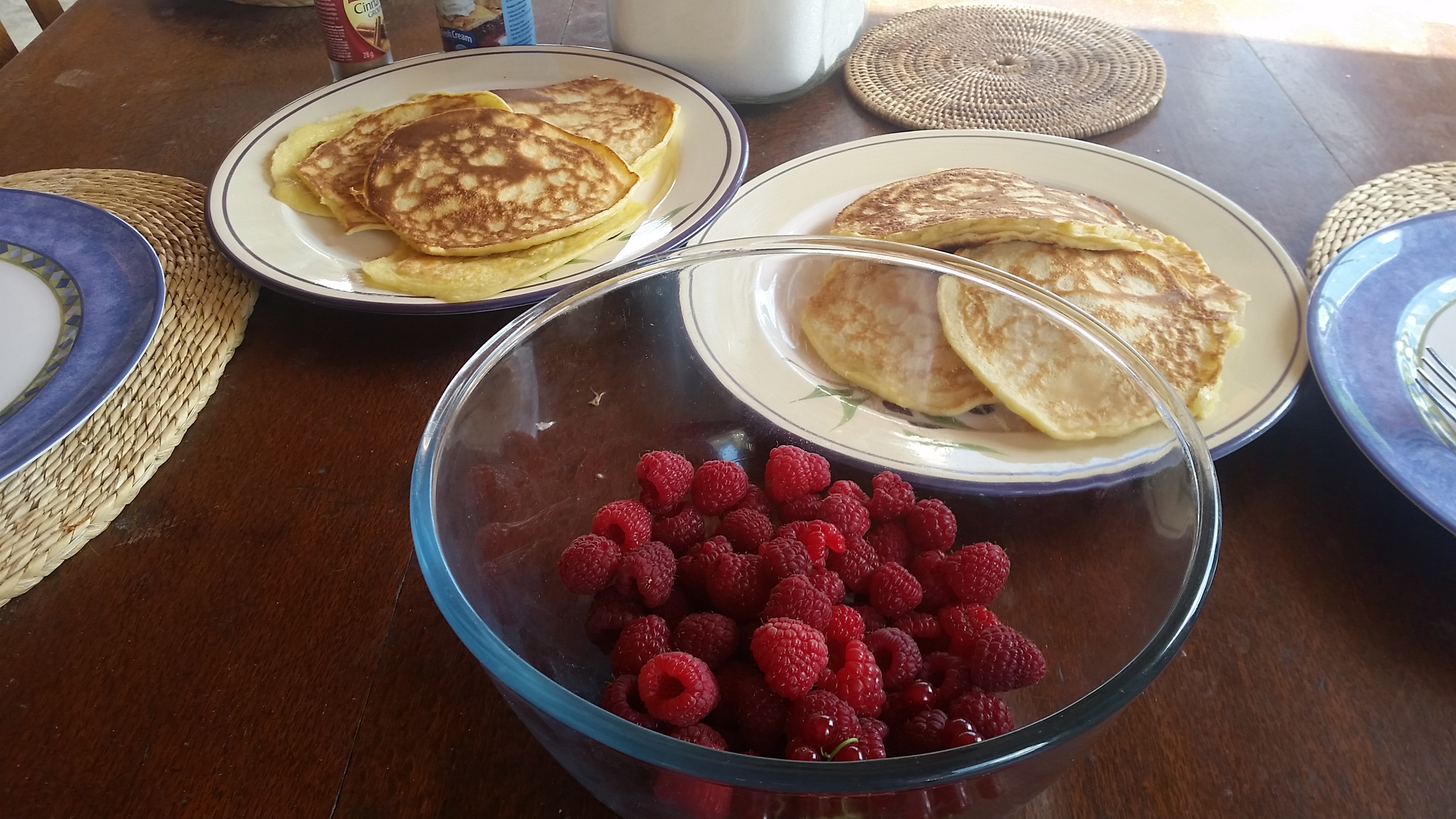

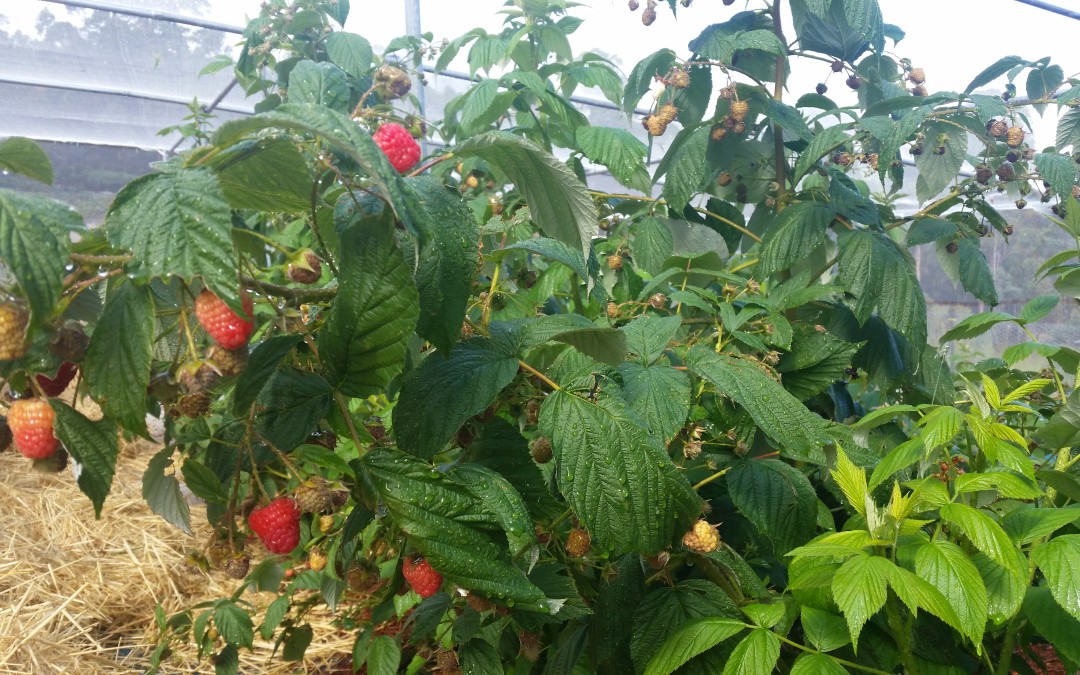
Horizontal feed pipe to all verticals,, yes the close plants get a little more but when the pipe is full you’ve not moved more than once !:)
Best Wishes
Mike
You’re right. It’s heaps easier watering into one pipe. I love it.
Mike, I’d like to give you a free copy of our book but can’t find your email address. Can you contact me?